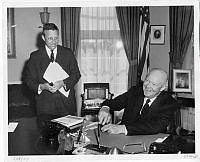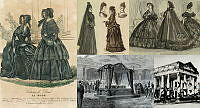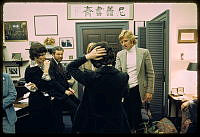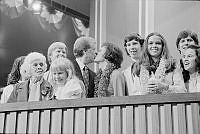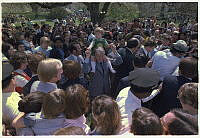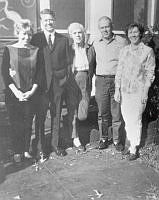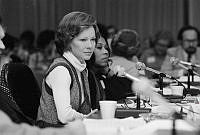White House Decorative Arts in the 1820s
Copyright © White House Historical Association. All rights reserved under international copyright conventions. No part of this article may be reproduced or utilized in any form or by any means, electronic or mechanical, including photocopying, recording, or by any information storage and retrieval system, without permission in writing from the publisher. Requests for reprint permissions should be addressed to books@whha.org
Reconstruction and refurbishing of the burned President's House continued into the 1820s. To refurnish the large house, President James Monroe exceeded funds appropriated by Congress and had even sold the government some of his own pieces to fill the rooms. He employed local craftsmen for some items, but imported most of the furniture from France. Few Americans had seen such grand objects, and visitors to the White House remarked on the splendor and elegance of vases, clocks, tables, gold centerpieces, and candelabrum.
John Quincy Adams took office in 1825 and found many of the house’s ordinary furnishings to be in poor condition. However, in the wake of Monroe’s extravagance, he needed to be conservative with the spending of public funds. As a consequence of the criticism of Monroe’s foreign purchases, Congress enacted legislation requiring that furniture bought for the President's House be manufactured domestically. As a result, Adams commissioned local cabinetmakers, among them M. Bouvier, great-grandfather of future first lady Jacqueline Kennedy, to create quality pieces for the President's House. Other items were bought at auctions and private sales.

Hannibal Clock. Case by Deniére et Matelin, Paris, France, c. 1817.














